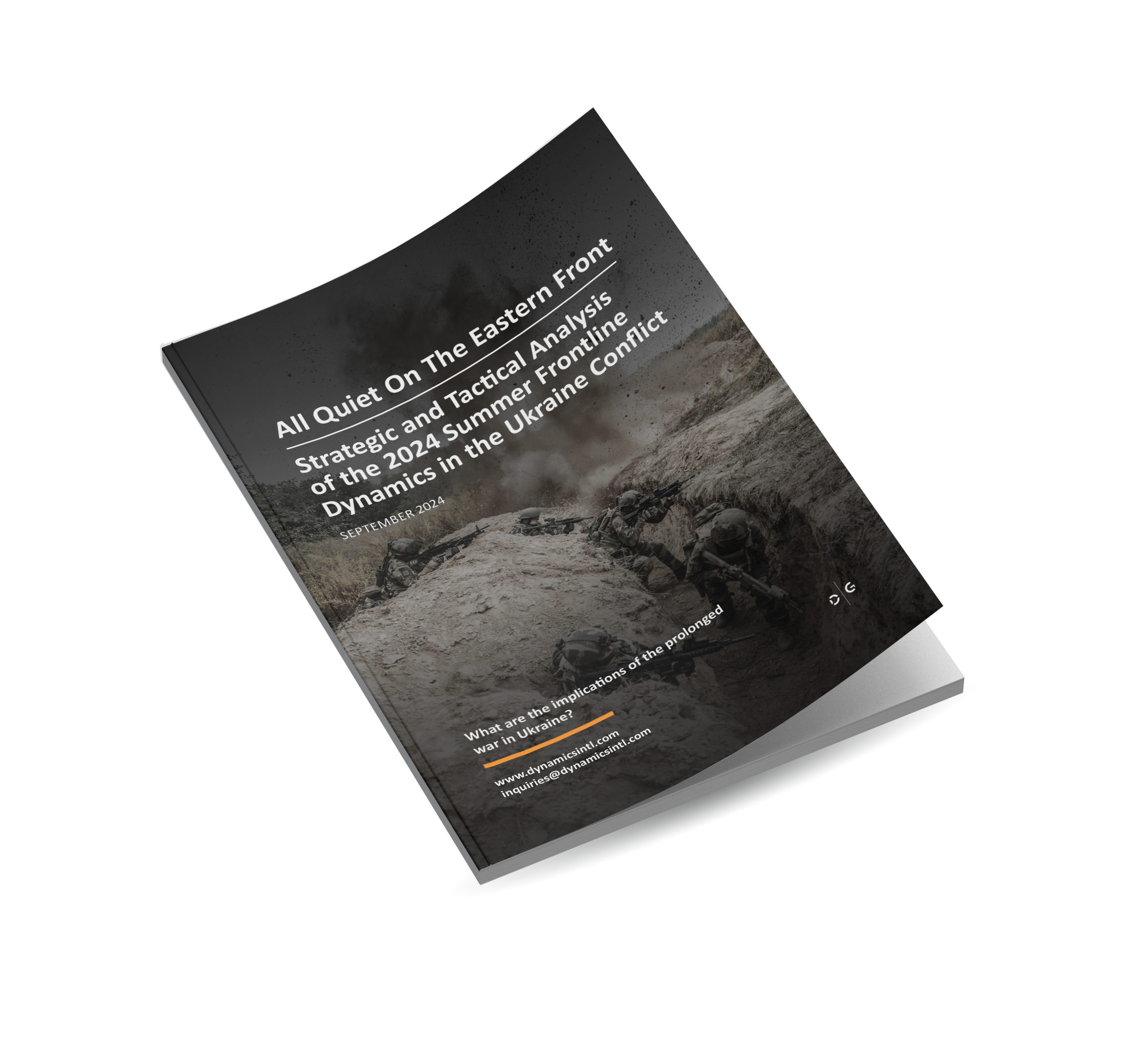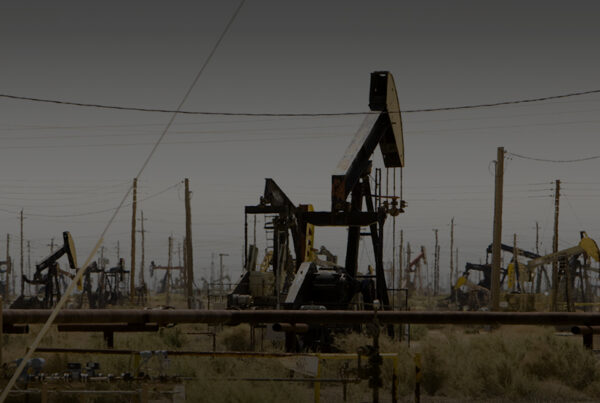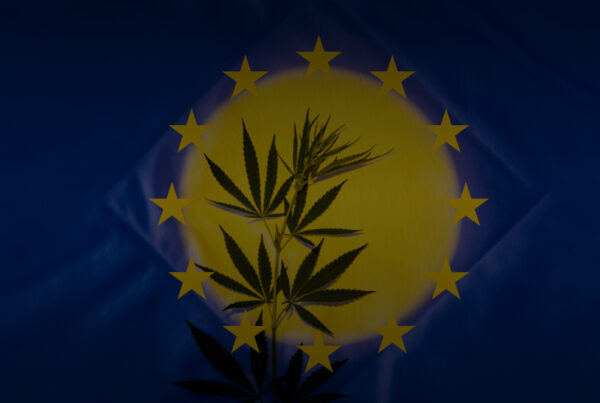The summer of 2024 has seen the conflict in Ukraine transform into a protracted and grinding struggle with both sides entrenched in a war of attrition that shows little hope for any resolution soon.
In a grim reflection of the famous novel by E.M. Remarque, the situation that formed at the front reflects the quiet but harsh nature of modern warfare—where progress is measured in meters and the frontline remains largely unchanged despite the constant clash of arms.
The developments on the frontline also shaped the current military and geopolitical landscape. A clear donors’ fatigue and sidetracking has been noted among the Ukraine’s partners in the West.
The following points summarize the key aspects of these developments, the difficulties faced by both the Ukrainian and Russian forces and the implications for the wider region.
- Incremental Russian Advances: The Russian military have successfully employed a cautious, methodical approach, capturing 32 settlements over the summer, averaging one settlement every two days. This slow but steady progress reflects a strategic decision to avoid high-risk, large-scale offensives.
- Shortage of Russian Reserves: Despite these gains, the Russian Armed Forces (RAF) has been limited by a critical shortage of reserves preventing them from fully exploiting breakthroughs and maintaining momentum in key areas such as the Toretsk agglomeration.
- Enhanced Russian Reconnaissance-Strike Capabilities: The Russian Military and Air Force (VKS) has significantly improved its reconnaissance-strike capabilities, particularly in the near and mid-frontline zones. This has allowed them to effectively target Ukrainian troop concentrations and regularly disrupt the Ukrainian counteroffensive operations.
How can we help?
Intelligence Solutions
The combination of business, market and strategic intelligence ensures result-driven outcomes for our customers.
Risk management
Risk management through the responsibility of taking risk ownership while ensuring safety and security
Strategic Advisory
The first step in protecting your organization, assets and people is the identification of the risks and threats.
- Ukrainian Mobilization Problems: The Ukrainian Armed Forces (UAF) have struggled with the quality and effectiveness of their mobilization campaign. The aging demographic of conscripts and inadequate training periods led to a considerable decline in the combat readiness of Ukrainian units.
- Inflexible Ukrainian Command Tactics and Decisions: Ukrainian military leaders frequently insist on holding positions that are strategically disadvantageous. This rigid approach has led to unnecessary losses and the neglect of more strategically important locations.
- Fragmentation of Ukrainian Forces: The fall of Avdiivka and subsequent Russian advances caused the fragmentation of Ukrainian forces, particularly in the Pokrovsk sector. This has stretched Ukrainian defenses thin creating vulnerabilities along an increasingly elongated frontline.
- Potential Encirclement in Chasiv Yar: The gradual decline of Ukrainian defenses in the Chasiv Yar sector poses a significant risk of encirclement. The fall of Chasiv Yar could have cascading effects, threatening the stability of Ukrainian positions in northern Donbas.
- Unforeseen Crisis in Toretsk: The sudden and unforeseen crisis in the Toretsk agglomeration, following the redeployment of Ukrainian forces, has highlighted the reactive and uncoordinated response to emerging threats, which led to the fall of key defensive positions.
- Opening of the Kursk Front: The Ukrainian Armed Forces launched a surprising incursion into Russia’s Kursk region, which present a significant escalation of the conflict. This operation, though symbolically potent, risks overextending Ukrainian forces and provoking a strong Russian response. The move may potentially expand the conflict into previously untouched areas. The strategic value of this offensive currently remains uncertain, and it has the potential to trigger a broader escalation along the entire Russian-Ukrainian border.
- Threat to EU Energy Security: The Ukrainian incursion into Russia’s Kursk region directly threatens European energy security. Sudzha, a critical transit point for Russian gas to the EU, is now at risk of disruption, potentially leading to sharp increases in gas prices and significant pressure on Europe’s energy infrastructure. It is also a powerful leverage, which Ukraine can use against EU members supporting Russia, particularly Hungary and Slovakia, which depend on Russian gas supplies.
- Geopolitical Strain: The ongoing conflict and the inability of either side to achieve a decisive victory are damaging the international support for Ukraine. The protracted nature of the conflict, coupled with Ukrainian setbacks, raises concerns about the long-term sustainability of Ukraine’s war effort.
- Risk of Escalation: The potential for escalation remains high, particularly if Russia seeks to capitalize on its summer gains with a retaliation for the Kursk incursion and more generally with a renewed offensive in the fall.
01
Foreword
01
Foreword
The developments during the summer of 2024, as most media call it, is “another critical phase”[1] in the ongoing conflict in Ukraine, where kinetic operations intensified further revealing strategic weaknesses and tactical adaptations on the battlefield by both sides.
The Ukrainian Army faced the double burden of losing strategic positions, particularly Avdiivka, while also dealing with new threats emerging from the Kharkiv region.[2] These events have not only stretched Ukrainian defenses to their limits but have also demonstrated the calculated and adaptive maneuvers of the Russian military.
The fall[3] of Avdiivka early in 2024 exposed significant gaps in Ukrainian defensive capabilities allowing for further Russian advances. The subsequent opening of the Kharkiv front in May 2024 combined these challenges leading to the redeployment of Ukraine’s most effective units, thereby creating critical vulnerabilities elsewhere along the frontline.[4] Despite these setbacks, the Ukrainian forces have managed to retain control over large areas, although at a high and still mounting cost. Moreover, Ukrainian troops conducted a successful incursion into the Russian territory in Kursk, where they managed to capture several villages and townships, which served as a major moral boost for the Ukrainian military and civilians.
Download Report
All Quiet on the Eastern Front
Strategic and Tactical Analysis of the 2024 Summer Frontline Dynamics in the Ukraine Conflict
On the opposite side, the Russian forces introduced a strategy characterized by deliberate caution and precision.[5] While avoiding large-scale offensives, they have instead focused on localized, incremental gains. This methodical approach has enabled Russia to secure at least 32 settlements, including key towns and strategic positions, without overcommitting its resources.[6] However, this strategy also reveals a significant constraint – the lack of sufficient reserves to sustain and expand upon these gains, limiting the potential for more decisive breakthroughs.
The following is a brief strategic and tactical analysis of the military dynamics in Ukraine.
02
Russian Military Strategy and Tactics
02
Russian Military Strategy and Tactics
The military developments during the summer of 2024 demonstrated a calculated and methodical approach by the Russian forces. These movements are not random but follow a clear pattern that reflects broader strategic decisions by Russian military command.
2.1 Cautious Advancements and Operational Restraint
The Russian military’s approach during the summer of 2024 has been defined by a measured pace of operations.[7] Rather than pursuing an all-out offensive, the Russian military has focused on exploiting weaknesses in Ukrainian defenses, particularly in areas where Ukrainian forces have been forced to redeploy to deal with the new threats.[8] This strategy has enabled Russia to make steady gains without risking the high casualties that could result from more aggressive tactics.
The Russian military success in capturing 32 settlements, including one city and two urban-type settlements proves the effectiveness of such approach.[9] On average, the Russian armed forces have been capturing one settlement every two days. This rate while slow, is quite effective in maintaining pressure on Ukrainian forces and gradually diminishing their defensive capabilities. This methodical approach is indicative of Russian President Vladimir Putin’s cautious mindset, preferring to secure incremental gains rather than risk larger, more decisive operations that could backfire.[10]
2.2 Challenges in Force Allocation and Reserve Management
Despite its successes, the Russian military has faced significant challenges in managing its reserves. The shortage of available reserves has limited the RAF’s ability to capitalize on breakthroughs and sustain momentum in key areas.[11] For example, in the Toretsk agglomeration, the RAF achieved initial success by breaching the first line of Ukrainian defenses, but the lack of sufficient reserves prevented a deeper penetration that could have resulted in the capture of the entire agglomeration.[12]
This issue of reserve shortages has been a recurring problem for the RAF throughout the summer 2024 campaign.[13] While the RAF has been able to make gains, these advances have often been incremental and localized with little opportunity for exploitation due to the inability to quickly reinforce successful operations. The Kremlin’s hesitation to initiate a wider mobilization effort has further aggravated this issue because the current “expeditionary-limited” format of the war restricts the RAF’s capacity for large-scale offensives.[14]
2.3 Improvements in Russian Reconnaissance-Strike Capabilities
One of the most significant developments in the Russian military’s summer campaign has been the enhancement of its reconnaissance-strike capabilities, particularly in the near and mid-frontline zones[15] – the so-called [1] “1st and 2nd lines”. This improvement has had a profound impact on the operational dynamics of the conflict, as the RAF has been able to effectively target concentrations of Ukrainian troops and equipment, thereby disrupting UAF operations and limiting their ability to mount counteroffensives.[16]
The RAF’s use of gliding aerial bombs has been particularly problematic for the UAF, which has struggled to defend against these strikes.[17] The effectiveness of Russian aerial bombing campaigns has been a key factor in the UAF’s inability to recapture any settlements during the summer of 2024 as any significant concentration of Ukrainian forces has been quickly identified and targeted by Russian air and artillery assets.[18]
03
Ukrainian Military Problems and Strategic Dilemmas
03
Ukrainian Military Problems and Strategic Dilemmas
The difficulties that Ukrainian military faces, have become more evident by the summer 2024, exposing some critical weaknesses that limit UAF battlefield effectiveness. These problems have roots in both internal issues and external pressures, creating a complex set of obstacles that significantly affect Ukraine’s ability to sustain its war effort.
3.1 Mobilization Issues and Degradation of Force Quality
The Ukrainian military has faced considerable difficulties in maintaining the quality and readiness of its forces, particularly in the context of ongoing mobilization efforts. The mobilization process in Ukraine has been hampered by the aging demographic of conscripts and the limited duration of training periods.[19] In 2023, the average age of conscripts reached 43 years,[20] which is expected to remain the same or even worsen in 2024.
The short training periods, typically lasting only one month, have proven inadequate in preparing newly mobilized soldiers for the roughness of frontline combat, especially for those over 40 years old.[21] This has led to a noticeable decline in the combat effectiveness of UAF units, particularly in offensive operations.[22] The inability to adequately train and equip new recruits has also contributed to the UAF’s struggle to mount successful counteroffensives, further exacerbating the strategic challenges facing Ukraine.
3.2 Inflexible Command Decisions and Tactical Miscalculations
Another critical issue negatively affecting the Ukrainian military has been the rigid and dogmatic approach of its command structure. Ukrainian military leadership has often insisted on holding positions, even when the tactical and strategic value of doing so is questionable.[23] This approach has led to unnecessary losses and the defense of untenable positions, which has, in turn, resulted in a series of unfavorable exchanges with Russian forces.[24]
For example, the UAF’s decision to defend the village of Sokol in Donetsk Oblast throughout June, despite its limited strategic value, resulted in heavy losses.[25] Simultaneously, more strategically important positions, such as the village of Progress, were lost within a day, illustrating the misalignment between strategic priorities and tactical execution. This pattern of defending less critical positions while losing more valuable ones has been a recurring issue for the UAF throughout the summer campaign.[26]
3.3 Impact of External Factors on Ukrainian Military Planning
The Ukrainian government’s difficulties in securing continued military and financial support from Western allies, particularly in the face of opposition from the Republican lawmakers in the United States,[27] further complicated the strategic landscape for Ukraine. The uncertainty surrounding Western aid has disrupted long-term military planning and forced Ukraine to adopt a reactive rather than proactive approach to the conflict.[28]
The delays in receiving military aid and the resulting shortages in equipment and resources significantly hampered the UAF’s ability to plan and execute large-scale operations.[29] The lack of strategic planning puts in question the long-term sustainability of Ukraine’s war effort and the strategic viability of continuing the conflict under the current conditions.[30]
04
Analysis of Key Theaters and Frontlines
04
Analysis of Key Theaters and Frontlines
Analysis of developments in the key theaters of the conflict by the end of summer 2024 demonstrate several vulnerabilities in Ukrainian defenses with each sector facing its own set of problems that collectively strain Ukraine’s overall strategy. The course of events in these areas also point to a possibility of strategic fragmentation and reactive command decisions further complicating the situation for Ukrainian Armed Forces.
4.1 Pokrovsk Sector:[31] Strategic Fragmentation and Logistical Strain
The Pokrovsk sector has emerged as a critical area of concern for the Ukrainian military following the fall of Avdiivka.[32] The loss of Avdiivka caused fragmentation of Ukrainian forces in the region, dividing them into the Toretsk and Pokrovsk-Kurakhove groups.[33] This division diminished the UAF’s ability to maintain organized defensive lines and stretched its resources across an increasingly elongated frontline.
The RAF’s operations in this sector have been characterized by their tactical flexibility, advancing mostly in areas where Ukrainian resistance is the weakest.[34] This approach allowed the Russians to gradually extend control over key positions while forcing the UAF to continuously redeploy its forces further weakening their defensive posture. The continued expansion of the front in this sector is currently a significant threat to Ukrainian forces, particularly because the RAF approaches the strategic Pokrovsk-Konstantinovka highway.[35]
How can we help?
Intelligence Solutions
The combination of business, market and strategic intelligence ensures result-driven outcomes for our customers.
Risk management
Risk management through the responsibility of taking risk ownership while ensuring safety and security
Strategic Advisory
The first step in protecting your organization, assets and people is the identification of the risks and threats.
4.2 Chasiv Yar Sector:[36] The Looming Threat of Encirclement
The Chasiv Yar sector, while experiencing only minor changes in terms of territorial control, remains a strategically important area due to its location on the dominant heights of northern Donbas.[37] The potential fall of Chasiv Yar would have far-reaching consequences for the UAF, creating immediate pressure on the logistical hub of Konstantinovka and threatening the flanks of the Kramatorsk-Sloviansk agglomeration.[38]
Despite the seemingly limited gains by the RAF in this sector, the slow but steady destruction of the Ukrainian defenses in and around Chasiv Yar suggest a gradual encirclement strategy.[39] Should the RAF succeed in capturing Chasiv Yar, it would significantly destabilize the UAF’s positions in northern Donbas and potentially force Ukrainian forces’ withdrawal from the region.[40]
4.3 Toretsk Agglomeration:[41] A Sudden and Unforeseen Crisis
The Toretsk agglomeration has become an unexpected focal point of the summer campaign following the redeployment of Ukrainian forces to other, more critical sectors.[42] The withdrawal of these units, which were replaced by less experienced and poorly trained Territorial Defense (TRO) units, resulted in the collapse of the first and most fortified line of defense in Toretsk.[43] The loss of key suburbs, such as Southern, Iron, and parts of New York, even further weakened the UAF’s hold on this critical area.
The Ukrainian military’s reactive response to the crisis in Toretsk, including the rushed redeployment of reserves, points to a broader problem of inadequate strategic foresight.[44] The interconnected nature of the Toretsk, Chasiv Yar, and Pokrovsk sectors means that any further losses in Toretsk could have cascading effects, potentially leading to the collapse of Ukrainian defenses in a much larger area.[45]
05
Kursk Incursion – Significance and Risk
05
Kursk Incursion – Significance and Risk
As previously analyzed, the conflict in Ukraine has evolved into a grinding war of attrition, with neither side able to secure a decisive victory. However, recent Ukrainian operations along the Russian border, specifically in the Kursk region, present a new destabilizing phase in the conflict.
5.1 The Sudden Escalation and A New Front Line
The Ukrainian military’s decision to initiate active combat operations in the Kursk region[46] is a drastic and bold escalation in the conflict,[47] which opened a potential new front in a war that until recently has primarily been concentrated within Ukrainian territory. The operation, which has seen Ukrainian forces advancing towards the border town of Sudzha, is puzzling and raised several strategic questions regarding the intentions and capabilities of the Ukrainian Armed Forces. While the initial reports suggest that Ukrainian troops have penetrated up to 15 kilometers into Russian territory, the strategic objectives of this offensive remain unclear.[48]
The decision to launch an offensive in the Kursk region, particularly at a time when Ukrainian forces are already stretched thin on multiple fronts, presents a potentially high-risk strategy of achieving a symbolic victory.[49] Sudzha, a small town with a population of approximately 5,000, is not of significant military value. However, capturing it would represent a psychological and propaganda victory for Ukraine, demonstrating the UAF’s ability to conduct offensive operations on Russian soil.[50] This, in turn, could be used to boost domestic morale and send a message to the international community about Ukraine’s resilience and determination.
5.2 Strategic Rationale and Potential Miscalculations
The timing and location of the Kursk offensive raised several concerns about the strategic wisdom of this operation.[51] Firstly, the decision to open a new front in the Kursk region comes at a time when Ukrainian forces are facing severe pressure on other critical fronts.[52] The ongoing battles in the Pokrovsk sector, the Toretsk agglomeration, and Chasiv Yar have already constrained Ukrainian resources. The decision to divert forces to the Kursk region could weaken Ukraine’s defensive capabilities in these more strategically important areas.
Secondly, the operation’s overall strategic value is questionable. Even if Ukrainian forces manage to capture Sudzha, the long-term benefits of such a victory are unclear.[53] The town’s limited military significance does not justify the potential costs, particularly when considering the need for sustained logistics and reinforcement in an extremely hostile environment. Additionally, this operation elevates the risk of provoking a strong Russian response, potentially leading to a drastic overall escalation of the conflict.[54]
5.3 Ukrainian Military Capacity and Strategic Overextension
The decision to open a new front in Kursk may point to the ongoing challenges faced by the Ukrainian military in managing its limited resources.[55] The Ukrainian Armed Forces have been engaged in a series of intense battles across multiple fronts and the decision to divert forces to the Kursk region could lead to additional constrain to their operational capacity.[56] This raises concerns about the potential for strategic overextension, particularly as Ukrainian forces continue to face significant challenges in other critical areas.
The Ukrainian military’s reliance on mass mobilization, coupled with the aging demographic of conscripts, has already led to a decline in combat effectiveness.[57] The addition of a new front could aggravate these issues and lead to further degradation of force quality, which would potentially undermine Ukraine’s ability to sustain prolonged operations. The Kursk offensive, while offering short-term gains, seriously risks weakening Ukraine’s overall defensive posture in the long run.[58]
5.4 Russian Response and Potential Escalation
The Russian response to the Ukrainian incursion in Kursk will be a critical factor in determining the operation’s overall success. Early indications suggest that Russia is likely to react strongly to this breach, particularly given the symbolic importance of defending the homeland.[59] Russian President Vladimir Putin’s recent public appearances showed a heightened level of concern within the Kremlin, and it is likely that Russia will respond with a combination of military and political measures.[60]
The incursion into Kursk has already triggered significant internal turmoil within Russia, particularly among the so-called “pro-war Z-community”, who view the situation as a strategic failure by the Russian military leadership. This internal quarrel may compel President Vladimir Putin to take drastic measures to reassert control and maintain domestic stability.[61]
Historically, Putin has responded to major setbacks with bold actions, such as the annexation of Crimea following the fall of Yanukovych and the declaration of a partial mobilization after the Kharkiv retreat in 2022.[62]
Download Report
All Quiet on the Eastern Front
Strategic and Tactical Analysis of the 2024 Summer Frontline Dynamics in the Ukraine Conflict
Given the strategic importance of this incursion, there is an elevated risk that Russia could respond with a new wave of mobilization, increased missile strikes on critical Ukrainian infrastructures, or attempt to achieve significant gains on other fronts to compensate for Kursk debacle.[63] Additionally, the incursion has reignited discussions within Russian circles about the potential use of nuclear weapons or using nuclear threats to force concessions from Ukraine and its Western allies.[64] While these scenarios remain speculative, the pressure on the Kremlin to deliver a strong response is quite clear.
The first signs of preparations for a response are already visible. Russia has begun reinforcing its positions in the Kursk region, and the presence of the Russian military grouping “Sever” suggests that Moscow is preparing for a serious engagement.[65] The risk of escalation is further heightened by the fact that the Kursk offensive breaks an unspoken agreement between the two sides regarding the delineation of the front lines. This breach could lead to the expansion of active combat operations across the entire length of the Russian-Ukrainian border, significantly complicating the conflict.[66]
5.5 Geopolitical and Diplomatic Implications
The Ukrainian offensive in Kursk also has significant geopolitical and diplomatic implications. The operation has already drawn cautious support from Ukraine’s Western allies, with statements from Brussels and Washington framing the offensive as a “sovereign decision by Ukraine”.[67] However, the long-term diplomatic consequences of this operation are uncertain. While the offensive may temporarily boost Ukraine’s negotiating position if it ever comes to that, it also risks alienating key international partners if it leads to a wider escalation of the conflict.
The operation could also influence the internal dynamics within Russia. The sights of Ukrainian forces operating on Russian soil is likely to be a major psychological blow to the Russian public and could undermine confidence in the Kremlin’s handling of the war.[68] However, it could also unite nationalist elements within Russia, leading to increased support for the war effort and further expanding the conflict.[69] The potential for domestic unrest in Russia driven by perceived failures in the war, adds an additional layer of complexity to the situation. Rumors of potential reshuffles of the key personnel in the Russian Ministry of Defense have already been circulating in various media.[70]
5.6 Impact on European Energy Security
The Ukrainian incursion into Russia’s Kursk region, particularly around the town of Sudzha is a significant risk to the stability of European gas supplies.[71] Sudzha serves as a critical transit point for Russian natural gas flowing to Europe with approximately 42 million cubic meters of gas passing through the region daily.[72] This operation clearly demonstrated the vulnerability of Europe’s energy infrastructure, as any disruption to this supply line could lead to sharp increases in gas prices and further strain the already tense geopolitical landscape.
European countries, especially those in Central Europe like Austria, Hungary, and Slovakia, are currently reliant on Russian gas, much of which is moved through Ukraine despite the ongoing conflict.[73] The ongoing fighting near Sudzha so far led to minor fluctuations in gas flow, but it pointed towards a distinct possibility of more significant disruptions should the conflict intensify, or the gas infrastructure be damaged.[74]
Despite the ongoing war, Ukraine has refrained from destroying or cutting the gas pipeline that traverses its territory, largely because doing so would violate its agreements with EU partners.[75] This pipeline is not only a crucial source of revenue for Ukraine, bringing in around $2 billion annually, but also a vital energy lifeline for European countries dependent on Russian gas.[76] Any disruption on Ukrainian soil could jeopardize these agreements, potentially leading to a loss of support from European allies.
However, the situation is different on the Russian territory. The Ukrainian incursion into the area near the critical gas hub of Sudzha, introduces new risks that fall outside the constraints of Ukraine’s deals with the EU.[77] Fighting in this area could inadvertently damage the pipeline or the Sudzha hub.[78] Moreover, a Russian response using heavy weapons on its own territory could result in the destruction of this infrastructure, making it appear that Russia, rather than Ukraine, was responsible for any disruption.
Thus, Kursk operation also puts additional pressure on European Union to intensify and speed up efforts to reduce dependency on Russian gas, especially as the transit contract between Naftogaz and Gazprom is set to expire at the end of the year.
06
Strategic Conclusions and Tactical Perspectives
06
Strategic Conclusions and Tactical Perspectives
As the conflict in Ukraine continues to evolve, the strategic and tactical landscapes provide a few insights into some implications of the summer 2024 campaign. The following conclusions and perspectives summarize the potential future developments in the ongoing fighting.
6.1 Strategic Conclusions
- Russian Strategic Resilience: The summer campaign of 2024 has demonstrated the Russian military’s ability to adapt its strategy to the evolving conditions on the ground. By avoiding large-scale offensives and instead focusing on localized, incremental gains, the RAF has been able to maintain pressure on Ukrainian forces while minimizing its own casualties. However, the shortage of reserves remains a critical limitation, preventing Russia from fully exploiting its successes and potentially stalling further advances.
- Ukrainian Strategic Vulnerabilities: The Ukrainian military’s issues with mobilization, coupled with rigid command decisions and external political pressures, severely undermined its operational effectiveness. The loss of key positions and the inability to mount successful counteroffensives showed the strategic vulnerabilities of the UAF. Without significant improvements in force quality, training, and strategic planning, Ukraine is likely to face continued setbacks on the battlefield.
- Geopolitical Implications: The ongoing conflict and the inability of either side to achieve a decisive victory have broader geopolitical implications. The continued attrition of Ukrainian forces and the gradual expansion of Russian control in eastern Ukraine may lead to a protracted conflict with no clear resolution in sight. This, in turn, could further strain international support for Ukraine, particularly if Western nations perceive the conflict as unwinnable under the current conditions.
- Strategic Overreach with the Kursk Incursion:The Ukrainian incursion into the Kursk region, while symbolically significant, risks strategic overreach. This operation has the potential to overstretch Ukrainian forces, weaken defenses on critical fronts and provoke a massive Russian response without traditional restrictions of the modern warfare. The long-term benefits of this offensive are unclear, and the move may inadvertently expand the conflict creating a more volatile battlefield along the entire Russian-Ukrainian border. In addition, it affects the EU energy security, which might further discourage some of the European countries from supporting Ukraine’s war efforts.
6.2 Tactical Perspectives
- Russian Tactical Flexibility: The RAF’s ability to quickly adapt its operational focus to exploit weaknesses in Ukrainian defenses has been a key factor in its 2024 summer campaign successes. This tactical flexibility, combined with improved reconnaissance-strike capabilities, will likely continue to shape Russian operations in the coming months. However, the RAF’s reliance on localized advances means that any significant breakthroughs will depend on the availability of reserves and the ability to keep the momentum of their operations.
- Ukrainian Defensive Priorities: For the Ukrainian military, the immediate priority is the stabilization of critical sectors of the front such as Toretsk and Chasiv Yar. This will require not only the redeployment of more capable units but also a reassessment of defensive priorities to avoid overextending forces in less strategically important areas.
- Potential for Escalation: The possibility of drastic escalation after Kursk incursion and RAF’s summer gains is currently very high and likely to extend into the fall. Additionally, there is threat of external involvement from Russia’s allies such as North Korea and Belarus whether through direct participation or through offering supplies.
- Tactical Risks of the Kursk Operation:The Ukrainian offensive in Kursk presents significant tactical risks, including the diversion of critical resources from more important areas and the problems of sustaining operations on the Russian territory due to difficult logistics.
07
Conclusion
07
Conclusion
The summer of 2024 on the “Eastern Front” shows a dark and rather telling parallel to the story immortalized by Erich Maria Remarque – a slow, grinding conflict that sees little glory but much attrition.
Apart from Kursk incursion, whose consequences are yet to be seen, the battlefield dynamics have not been characterized by decisive victories or sweeping maneuvers, but rather by the steady, almost monotonous advance of Russian forces, inch by inch, village by village, as if to reflect the “quiet” of relentless, methodical warfare that wears down rather than overwhelms.
On one side, Russian Forces embraced a strategy of cautious advancement, capturing strategic positions with deliberate restraint. The absence of large-scale offensives in favor of localized, incremental gains, mirrors a broader strategic patience, perhaps driven as much by necessity as by design.
This slow but persistent approach has seen Russia consolidate control over key areas, yet it has also revealed the constraints of a military operation limited by the scarcity of reserves. The careful conserving of resources has allowed Russia to maintain pressure on Ukrainian forces, but it also demonstrated the limitations essential in avoiding full mobilization.
How can we help?
Intelligence Solutions
The combination of business, market and strategic intelligence ensures result-driven outcomes for our customers.
Risk management
Risk management through the responsibility of taking risk ownership while ensuring safety and security
On the other side, Ukraine finds itself in an increasingly risky position, much like the soldiers on Remarque’s Western Front, caught in the endless cycle of defensive battles. The Ukrainian military has been stretched thin, both geographically and strategically, as it deals with the consequences of the loss of critical territories such as Avdiivka. The rigid and sometimes misguided command decisions, coupled with the ongoing challenges of an aging and poorly trained mobilization base, caused a series of setbacks that could have cascading consequences for Ukraine.
In the middle of these developments, the Ukrainian incursion into Kursk region introduces a new and potentially damaging for Ukraine dimension to the conflict. While the operation has the potential to demonstrate Ukraine’s offensive capabilities and disrupt Russian forces, it also risks overextending an already strained military. The symbolic value of the Kursk operation may not outweigh the strategic risks, as the incursion could provoke a strong Russian counteroffensive and further escalate the conflict, stretching the frontlines and resources of both sides even thinner.
The prolonged conflict with neither side achieving a decisive victory affects the international support for Ukraine. The steady advance of Russian forces, though far from triumphant, may nonetheless push the conflict into a protracted stalemate, where the once-clear lines of battle become indistinct in a war of attrition. The echoes of Remarque’s quiet front resonate here—a front where the noise of battle is drowned out by the slow, grinding march of inevitability.
As the conflict drags into the fall of 2024, both sides face the potential for escalation. For Ukraine, the question remains whether it can stabilize its defenses and adapt its strategies in time to prevent further losses. For Russia, the challenge will be to sustain its advances without overreaching its limited resources. In the end, the summer of 2024 may well be remembered not for its battles won or lost, but for the quiet persistence of a war that neither side seems capable of winning outright—a war where, despite the constant activity, all remains quiet on the Eastern Front.

ARTICLE | 32 PAGES






